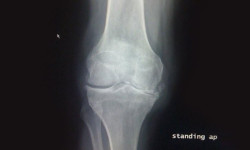A conversation about Strength, Stiffness and Weight, from Bledsoe Bracing
One important factor in brace design is the strength and stiffness versus the weight of the materials.
Strength and stiffness are not the same thing. Here’s an analogy: A rubber band is stretched to failure. The rubber band failed at five pounds of force, but it stretched more than double its length before failure. The rubber band was not very stiff. In fact, it was elastic. Next, we stretch a kite string and find that it also fails at five pounds. It only stretched five percent before failure. It is very stiff. Both the rubber band and the kite string have the same ultimate strength. However, one is very stiff and the other is very flexible. This should demonstrate that strength and stiffness are not the same thing, and they are dependent upon the chosen material. Furthermore, the shape of the material also determines its stiffness without affecting its ultimate strength. For instance, if we take a plastic ruler that is 1/8″ thick and 1″ wide and bend it in the flat direction it is obvious that it is flexible. However, if we try to bend across the 1″ thickness we find that it is very stiff. This demonstrates that the shape of the material causes the stiffness to change. We can take a piece of metal with a given weight and length and change its stiffness by making it narrower and thicker. Conversely, we can make it more flexible by making it wider and thinner.
The weight of the material is also an important characteristic. But the weight cannot be considered without looking at the strength and the stiffness of the material. If we divide the strength of a given material by its weight we arrive at its specific strength. Also, if we divide its stiffness by its weight we arrive at the specific stiffness. Mother nature has played a cruel trick on most engineers. If we look at the specific strength and specific stiffness we find that a great many engineering materials fall within a narrow range. Balsa wood is extremely light and stiff, but not very strong. However, when we divide its strength and stiffness by its weight, it is in the same range as steel and aluminum. While carbon fiber is extremely strong compared to its weight, this is only true in a tensile direction. In other words, we can pull on it, but we cannot push on it! It is held together by an epoxy, polyester, or some other plastic. It is the plastic that takes the force in a pushing or compressive direction. In order to achieve strength and stiffness in many directions it is necessary to place extra fibers running in many directions to achieve the necessary characteristics. Carbon fiber structures usually fail in compression since it is the plastic resin providing the strength. After the additional structure is added to provide strength in many different directions, the specific strength and specific stiffness fall in the same range as most metal alloys.
Composite structures have some other unique characteristics. There is no yielding or bending point. When the ultimate strength is reached, it simply explodes or disintegrates. Metal alloys on the other hand usually exhibit a definite yield point or point at which some bending occurs before final failure. This allows us to utilize a smaller safety margin when using metals than is possible with composite structures. In other words, we must make the composite structure bigger and heavier to account for the extra safety margin. Composite materials allow engineers to create very complicated structures with reduced weight and increased strength at a lower-cost than can be achieved with some metal structures, but the limitation is usually in the manufacturing or machining methods available and not in the strength to weight ratio. In fact, it is usually possible to create a simple metal structure that is just as strong, stiff, and lightweight as is possible with most composites.
Composite structures also have some other disadvantages compared to metal alloys. They do not expand and contract at the same rate as most metals. At the same time, they are very poor at handling bearing loads from a bolt, a fastener, or a shaft. Metal parts must usually be added to carry the loads at certain pivot points like the hinge. Differential heat expansion between the metal and the composite can cause the composite structure to fracture when it is placed in the hot trunk of an automobile on a warm day. And finally, most composite structures do not allow reforming or changing the shape if the patient’s size changes during rehabilitation. This limitation alone is sufficient to prevent Bledsoe from utilizing these expensive composite materials for its functional braces.
Creating a brace with the proper balance of strength, elasticity or stiffness, and other properties is the real challenge in bracing design. Many functional braces must withstand the rigors of sports play. If they are too stiff they will break upon impact. If they are too flexible they will not provide sufficient support or proprioception. Bledsoe has learned to manufacture high-tech aerospace aluminum super alloy braces as lightweight as those made of carbon fiber composite materials, but with the ability to re-mold the brace at any point. The cost is much less, the brace is more flexible, and the ultimate strength in most cases is equal or superior. Do not be fooled by the high-tech smoke and mirrors of many bracing companies. Graphite, carbon fiber, and Titanium are not the only materials available that permit high strength braces.




